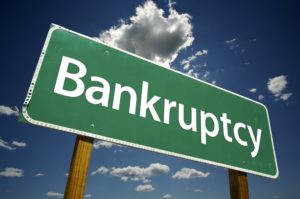 The Bankruptcy Code (the “Code”) does not expressly prohibit a Chapter 7 debtor from simultaneously seeking relief under Chapter 13. Notwithstanding this fact, courts have split on whether a debtor may maintain two separate pending bankruptcy proceedings. A majority of courts have adopted a per se rule prohibiting a debtor from having more than one bankruptcy case open at any time. This is the “single estate” rule, a court-created doctrine that prohibits simultaneous bankruptcy cases, even if each bankruptcy estate is comprised of different debts. See, In re Lord, 295 B.R. 16 (Bankr. E.D.N.Y. 2003); In re Standfield, 152 B.R. 528 (Bankr. N.D.Ill. 1993); In re Keen, 121 B.R. 513 (Bankr. W.D.Ky. 1990); In re Bodine, 113 B.R. 134 (Bankr. W.D.N.Y. 1990); In re Jackson, 108 B.R. 251 (Bankr. E.D.Cal. 1989); In re Fulks, 93 B.R. 274 (Bankr. M.D.Fla. 1988); and In re Smith, 85 B.R. 872 (Bankr. W.D.Oka. 1988). The “single estate” rule is easy to apply because it prohibits a debtor from commencing a new bankruptcy case while a prior case remains pending. Under this approach, the filing of the second case constitutes an abuse of the bankruptcy process.
The Bankruptcy Code (the “Code”) does not expressly prohibit a Chapter 7 debtor from simultaneously seeking relief under Chapter 13. Notwithstanding this fact, courts have split on whether a debtor may maintain two separate pending bankruptcy proceedings. A majority of courts have adopted a per se rule prohibiting a debtor from having more than one bankruptcy case open at any time. This is the “single estate” rule, a court-created doctrine that prohibits simultaneous bankruptcy cases, even if each bankruptcy estate is comprised of different debts. See, In re Lord, 295 B.R. 16 (Bankr. E.D.N.Y. 2003); In re Standfield, 152 B.R. 528 (Bankr. N.D.Ill. 1993); In re Keen, 121 B.R. 513 (Bankr. W.D.Ky. 1990); In re Bodine, 113 B.R. 134 (Bankr. W.D.N.Y. 1990); In re Jackson, 108 B.R. 251 (Bankr. E.D.Cal. 1989); In re Fulks, 93 B.R. 274 (Bankr. M.D.Fla. 1988); and In re Smith, 85 B.R. 872 (Bankr. W.D.Oka. 1988). The “single estate” rule is easy to apply because it prohibits a debtor from commencing a new bankruptcy case while a prior case remains pending. Under this approach, the filing of the second case constitutes an abuse of the bankruptcy process.
A minority of courts have declined to adopt a per se rule against filing of simultaneous Chapter 7 and Chapter 13 cases by the same debtor, where the cases relate to different assets and different debts. Even with this minority view, a Chapter 13 case may not be filed to obtain control of an asset which is simultaneously being administered in a Chapter 7 case. These courts focus on whether the second case interferes with the administration of the bankruptcy estate in the first case. In re Kosenka, 104 B.R. 40 (Bankr. N.D.Ind. 1989); In re Hodurski, 156 B.R. 353, 356 (Bankr. D.Mass. 1993); In re Ragsdale, 315 B.R. 691, 693 (Bankr. E.D.Mich. 2004); and In re Montes, 526 B.R. 397, 402 (Bankr. D.N.M. 2015). If the two bankruptcy estates are “totally distinct and separate”, courts utilizing this approach will allow both cases to proceed simultaneously. Under this view, a debtor can commence a chapter 13 case in the face of a pending chapter 7 proceeding, provided that the debtor already received a chapter 7 discharge and the remaining tasks in the chapter 7 case are purely administrative. This permissive rule is supported by the rationale that debtors should not be denied access to bankruptcy relief when nominal administrative or procedural delays have prevented the chapter 7 case from concluding.
In In re Shankman, 382 B.R. 591 (Bankr. E.D.N.Y. 2008), the court dismissed a Chapter 13 case, stating that “[t]he debtor is barred from refiling a Chapter 13 case while his Chapter 7 case is pending.” Id. at 595. In reaching this conclusion, the court noted that in the first the Chapter 7 case, the trustee had not abandoned the estate’s interest in the apartment the debtor was trying to protect in his new Chapter 13 case. In fact, the trustee had entered into a stipulation pursuant to which the mortgagee would sell the apartment and the estate would receive at least $20,000 from sale proceeds. “Since the apartment is property of the estate in the Chapter 7 case, it cannot be property of the estate in the Chapter 13 case, as contemplated by the debtor.” Id.
In Layman v, Tennessee State Bank, 2021 WL 6425951 (E.D.Tenn. Feb. 2, 2021), reached the same conclusion as the court in Shankman. Layman, however, involved two simultaneous Chapter 11 cases. Here, the court relied on the Supreme Court decision of Freshman v. Atkins, 269 U.S. 121 (1925), where it ruled that a pending bankruptcy “precluded a consideration of the second [bankruptcy] in respect of the same debts.” Id. at *3 (quoting Freshman at 122). The court noted that the Supreme Court analogized its decision to the doctrine of prior suit pending. Under this doctrine “the general rule that the law will not tolerate two suits at the same time for the same cause.” Id. (quoting Freshman, 269 U.S. at 123). Significantly, the court noted that the two Chapter 11 cases it was dealing with simultaneous filings, not serial filings. This was due to the fact that in the first bankruptcy case, although administratively closed, the debtors had not yet received a discharge pursuant to the terms of the first Chapter 11 plan.
Considering the 2014 Bankruptcy is ongoing, and the debts in this bankruptcy are largely the same, the Bankruptcy Court properly dismissed this bankruptcy because simultaneous Chapter 11 restructuring bankruptcies are not permitted as it would create two lawsuits for the same cause.
Id. at *4.
Conversely, in In re Strohscher, 278 B.R. 432 (Bankr. N.D.Ohio 2002), the court held that it is not necessarily an act of bad faith for a debtor to have two pending bankruptcy cases. The court noted that Section 109 of the Code contains no actual prohibition against the debtor maintaining simultaneous bankruptcy cases. Similarly, nowhere else in the Code is it set forth that a debtor is prohibited from maintaining two simultaneous bankruptcy cases. Therefore, because there was no such statutory prohibition, Strohscher permitted a debtor to maintain two simultaneous bankruptcy cases. See also, In re Cowan, 235 B.R. 912 (Bankr. W.D.Mo. 1999); In re Bullock, 206 B.R. 389 (Bankr. E.D.Va. 1997); In re Kosenka, 104 B.R. 40 (Bankr. N.D.Ind. 1989) and In re Strause, 97 B.R. 22 (Bankr. S.D.Cal. 1989).
However, Strohscher went on to note that maintaining two simultaneous bankruptcy cases is proper only if a discharge has been granted in the first case. The court reached this conclusion noting that a debtor, prior to receiving its discharge in a Chapter 7 case, has an absolute right to convert to a Chapter 13 case. Therefore, the court found it difficult for it to conceive of any legitimate reason as to why a debtor would, prior to receiving a discharge, need to file a new case. The court concluded “[t]herefore, the underlying principle that a debtor may file only a subsequent bankruptcy case after first receiving a discharge will be applied by the Court, unless the debtor can demonstrate exceptional and unique circumstances which will necessitate the granting of extraordinary relief.”
A similar conclusion was reached in In re Ragsdale, 315 B.R. 691 (Bankr. E.D.Mich. 2004). Here the court recognized that while simultaneous filings some cases may be indicative of bad faith, “the Court can determine this issue in the context of objections to confirmation of the Chapter 13 plan or at some other appropriate time, such as the hearing on a motion for relief from stay when the likelihood of a successful reorganization is at issue.” Id. at 693. The court further noted that the existence of a Chapter 13 case does not interfere with the Chapter 7 trustee’s ability to administer the Chapter 7 estate. The Chapter 13 case is funded with the debtor’s wages. If the Chapter 7 trustee recovers assets, the assets will be distributed to creditors in the Chapter 7 case. Such a distribution will have no impact on the Chapter 13 case. Id. at 693-94.
In In re Chain, 558 B.R. 750 (Bankr. W.D.Pa. 2016), the court stated that it was not required to adopt either the “single estate” rule or the permissive rule. It did so noting that under the Supreme Court’s direction in Freshman, 269 U.S. at 123 (1925), simultaneous cases cannot proceed if each bankruptcy estate endeavors to administer the same assets to pay off the same claims. In Chain, the record established that the assets in the debtor’s Chapter 13 bankruptcy estate were the same as those in his Chapter 7 case. Moreover, the debtor’s Chapter 13 plan proposed to make payments to many of the secured and priority creditors who could receive a distribution in the Chapter 7 case. The court stated:
Unlike those instances where simultaneous cases are allowed to proceed, Chain’s chapter 7 case remains open because the trustee is actively liquidating the estate’s assets. This is not a mere ministerial act, but rather, it represents one of the core functions of the bankruptcy process.
Id. at 756.
Matthew T. Gensburg
[email protected]

